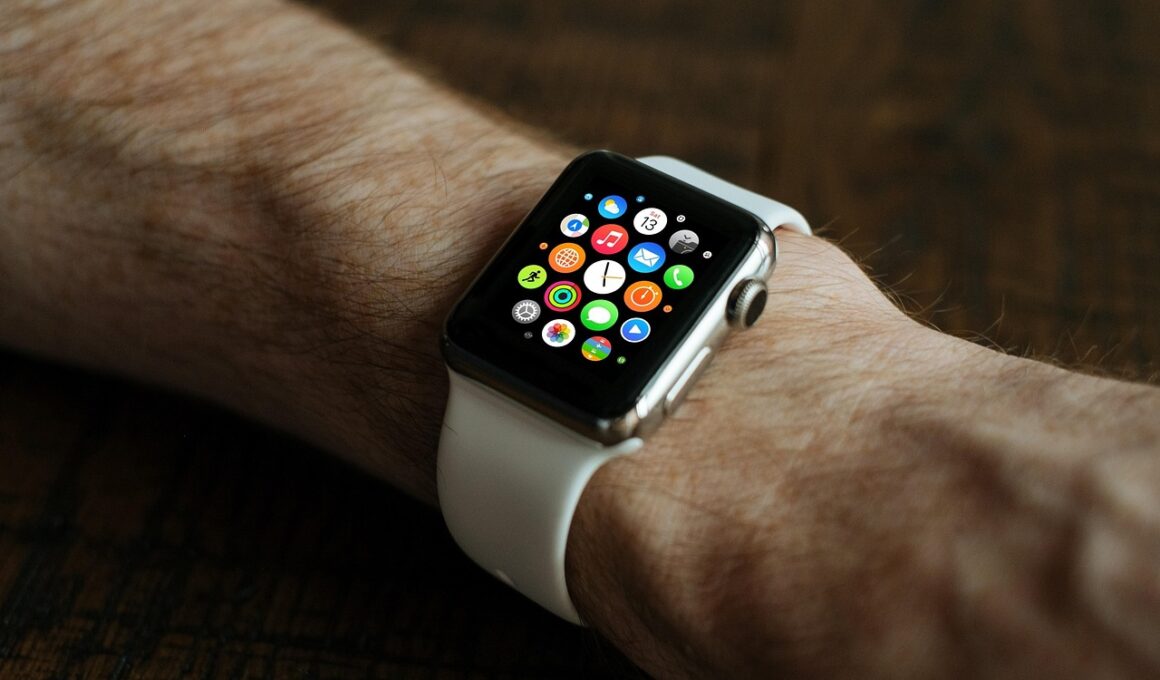How Wearable Devices Improve Coordination and Balance
In recent years, wearable technology has transformed various aspects of our daily lives, particularly in the areas of health and fitness. Devices such as smartwatches and fitness trackers have incorporated sensors and software capable of monitoring various physical attributes. One key area where these devices excel is in balance and coordination training. By utilizing real-time data, individuals can gain valuable insights into their balance efficiency and body mechanics. Each device is programmed with specially designed algorithms that analyze data, allowing for personalized feedback. This level of interaction fosters a proactive approach to improving coordination. Integration with mobile applications enhances the experience, offering tailored exercises. Users can track their progress over time, observing improvements or identifying areas needing attention. The ultimate aim is to enhance stability and overall performance, particularly for those recovering from injuries or looking to improve athletic pursuits. Another exciting aspect of this technology is its accessibility. With various options available, people from all walks of life can benefit from interventions centered on achieving better coordination. It’s an era where technology meets fitness effectively, positively influencing both physical health and wellbeing.
The science of balance is intricate, involving a multitude of processes at play within the body. Various systems, including sensory input, motor output, and cognitive processing, work intricately together to help maintain balance. Wearable devices have the unique capability to dissect these processes, providing real-time analytics that enhance our understanding of how we maintain stability. Metrics such as gait analysis, posture feedback, and even fall detection contribute greatly to an athlete’s training regime or a rehabilitation program. By customizing exercises to address specific weaknesses revealed by sensor data, trainers and therapists can refine techniques aimed at bolstering balance. For example, a device might show that an individual leans slightly to one side, which can lead to tailored exercises focusing on core strength and stability. Furthermore, consistent use of these wearables can foster motor-learning improvements, essential for athletes aiming to refine their sport-specific skills. This feedback-loop facilitates a continuous cycle of improvement, where users can find their balance threshold, pushing boundaries safely. The transition from data collected to practical application is a modern approach to overcoming balance deficiencies.
Practical Applications of Wearables
Everyday applications of wearable devices extend beyond athletes; they are essential for seniors or individuals recovering from injuries as well. As the population ages, maintaining balance becomes an essential aspect of daily living. Wearable devices designed for this demographic include alerts for potential falls, encouraging timely interventions from caregivers or loved ones. Enhanced movement patterns can also be improved through guided exercises tailored for strength and coordination. The integration of biofeedback mechanisms enables immediate adjustments during exercises, making them more effective. When seniors use such devices, they tend to report a greater sense of security and independence. Beyond safety features, wearables also offer social connectivity, allowing users to share their progress within communities which can motivate individuals further. Those engaged in rehabilitation appreciate how these devices chart their recovery path, offering insights that traditional medical visits might overlook. Regular use of wearables can potentially correlate with increased motivation to stay active, assuring that the focus is on maintaining physical abilities. In essence, wearable technology promotes longevity through balance and independence, significantly uplifting the quality of life for many.
The versatility of wearable devices spans across various sports disciplines and activities. Athletes can utilize these technologies in sports like dance, gymnastics, martial arts, and even team sports. For instance, a dancer might rely on feedback regarding their center of gravity to enhance their performance and prevent injuries. Similarly, gymnasts utilize wearables to analyze their routines, focusing heavily on elements that demand balance and coordination. Furthermore, coaches can derive vast amounts of data from multiple athletes, pooling this information to refine training programs. This collective analysis fosters a culture of improvement that embraces technology. Additionally, these wearables often sync seamlessly with other fitness applications, creating comprehensive health-tracking ecosystems that monitor overall performance. By establishing goals based on the data collected, athletes become more focused and engaged in their training activities. Some wearables produce gamification elements, turning training into an enjoyable pursuit. This gamified experience increases adherence to training regimes, which ultimately leads to improved balance and coordination skills. Overall, as technology continues to advance, the versatility of wearables appears limitless, with endless possibilities for varied applications and enhancements towards balance-related training.
Future Innovations in Wearables
As technology progresses, the future of wearables promises even more revolutionary advancements tailored to enhance balance and coordination training. Emerging technologies like augmented reality (AR) and virtual reality (VR) could see integration with wearables, creating immersive training experiences. Imagine balancing on a virtual beam while adjusting your center of gravity, guided by real-time analytics. Such experiences develop a profound understanding of body mechanics and can enhance the learning process significantly. Furthermore, as artificial intelligence (AI) becomes more sophisticated, predictive analytics might enable devices to foresee potential injuries or balance complications based on user behavior or historical data. Analyzing trends over time could lead to personalized training protocols that adapt to specific needs dynamically, providing a futuristic approach to balance training. Integration with smart home health systems may also emerge, connecting wearables to existing health databases, enhancing holistic care methodologies. Biometric feedback could lead to individualized regimens promoting balance-related workouts tailored to maintain peak performance levels while reducing risks. Such advancements promise an exciting landscape for athletes, trainers, and individuals alike striving to enhance their balance and coordination.
Empirical evidence supports the effectiveness of using wearable devices for improving balance and coordination. Numerous studies highlight a link between wearable device usage and measurable balance improvement, especially among older adults and athletes. When engaging with wearables, individuals can often pinpoint significant shifts in balance capabilities, which in turn influences their overall mobility and activity levels. Regular users tend to demonstrate better engagement with physical activity; be it through feedback-loop systems that motivate consistent training or the playful nature of gamified interactions. The technology prioritizes user involvement and emphasizes engagement, making the process of improving balance approachable. In contrast to traditional strength training methods, wearables offer a more enjoyable and motivating experience for individuals, ensuring stronger compliance with training programs. Additionally, practitioners have reported better outcomes in physiotherapy settings when incorporating wearables as part of rehabilitation protocols. The ability of wearables to provide immediate feedback assists therapists in effectively guiding their patients through tailored exercises aimed at improving stability. The overarching consensus indicates that investable technologies focusing on coordination training yield substantial results, highlighting wearable technology’s role as a game-changer in health and wellness.
Conclusion
In summary, wearable devices provide innovative solutions to improve coordination and balance across various demographics. They harness data analytics and technology to offer personalized feedback and improve physical capabilities effectively. Individuals seeking to enhance their balance through fun, interactive, and engaging activities now have viable alternatives at their disposal. Technology continues to bridge the gap between traditional training methods and modern fitness approaches, affirming the importance of adaptability in health interventions. This evolution illustrates the strategies available to emphasize the significance of coordination in everyday life. Even the most sedentary individuals can find their entrance to a more active lifestyle through wearables. As such devices evolve, we will likely see even greater integrations that enrich training experiences and overall health. The continuous feedback on performance encourages users to strive for betterment continually. By embracing these advancements, everyone can enjoy the benefits of improved coordination and balance, enabling healthier, safer, and more active lifestyles. The future looks promising as we engage in an era where technology empowers our physical abilities, redefining the approach to personal health and fitness through innovative solutions.


